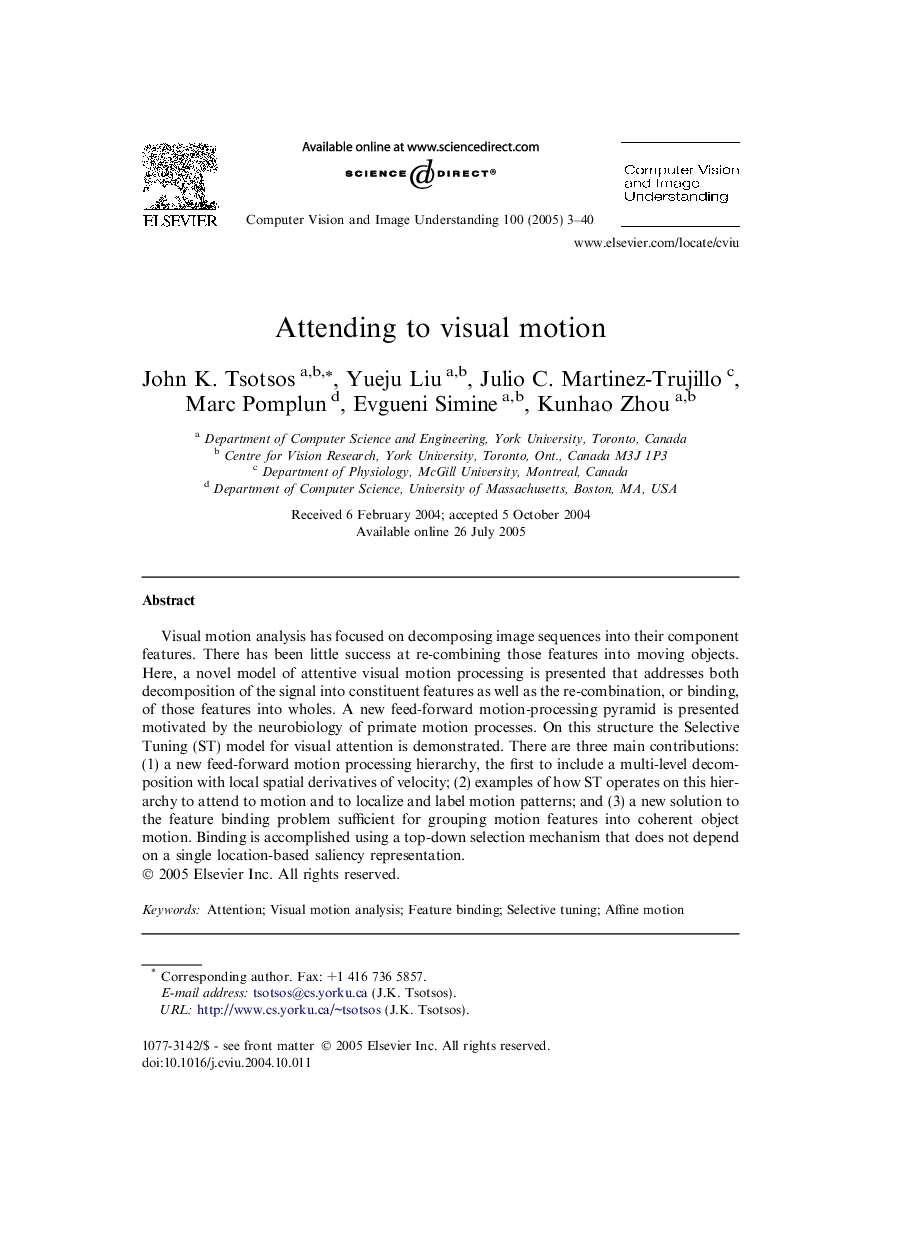| Article ID | Journal | Published Year | Pages | File Type |
|---|---|---|---|---|
| 9669557 | Computer Vision and Image Understanding | 2005 | 38 Pages |
Abstract
Visual motion analysis has focused on decomposing image sequences into their component features. There has been little success at re-combining those features into moving objects. Here, a novel model of attentive visual motion processing is presented that addresses both decomposition of the signal into constituent features as well as the re-combination, or binding, of those features into wholes. A new feed-forward motion-processing pyramid is presented motivated by the neurobiology of primate motion processes. On this structure the Selective Tuning (ST) model for visual attention is demonstrated. There are three main contributions: (1) a new feed-forward motion processing hierarchy, the first to include a multi-level decomposition with local spatial derivatives of velocity; (2) examples of how ST operates on this hierarchy to attend to motion and to localize and label motion patterns; and (3) a new solution to the feature binding problem sufficient for grouping motion features into coherent object motion. Binding is accomplished using a top-down selection mechanism that does not depend on a single location-based saliency representation.
Related Topics
Physical Sciences and Engineering
Computer Science
Computer Vision and Pattern Recognition
Authors
John K. Tsotsos, Yueju Liu, Julio C. Martinez-Trujillo, Marc Pomplun, Evgueni Simine, Kunhao Zhou,
